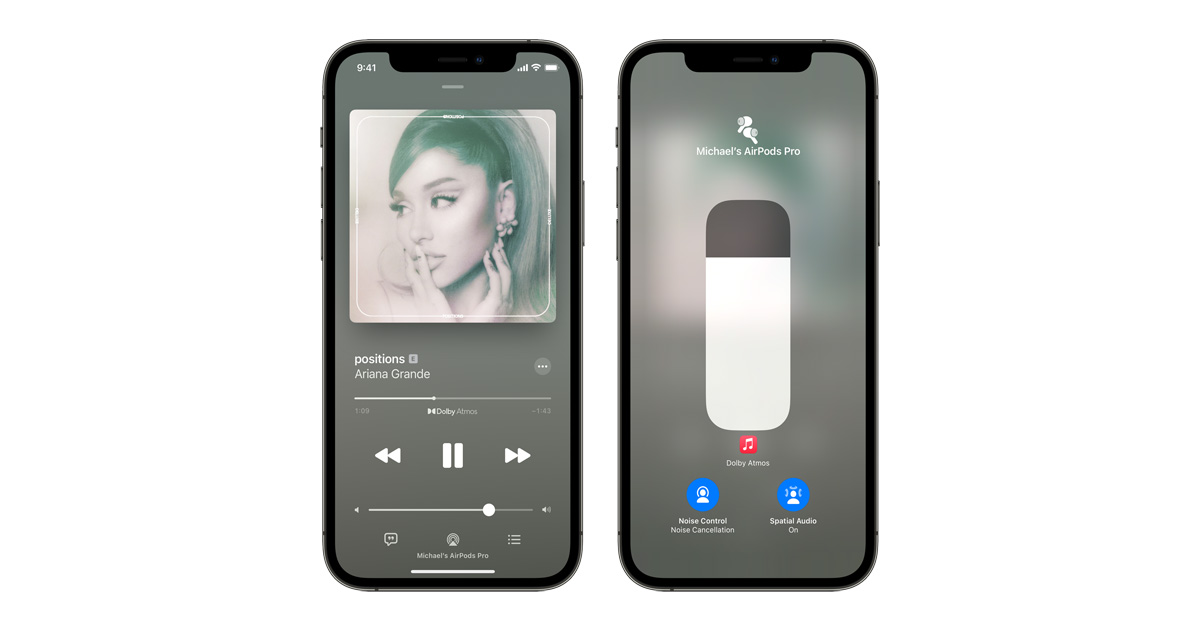During the WWDC 2021 keynote, Apple announced the launch of Apple Music Spatial Audio for all iOS users. Spatial Audio is designed to bring height and rear effects to video calls, music, and specially remixed music. It uses the headphones’ accelerometer for head tracking so onscreen audio stays in place when users move their heads.
When asked about what technologies will bring the next-gen of music streaming in an interview, Apple’s senior vice president of services Eddy Cue said that he believes that it is going to be spatial audio without a question. He believes that the majority of listeners cannot tell the difference between CD-quality or hi-res tracks, and AAC or MP3 files.

Spatial Audio is the future of music, not lossless audio; says Eddy Cue in an interview
In an interview with Billboard‘s Micah Singleton, Cue acknowledged that the higher-bitrate tracks might matter to music lovers with particularly sharp hearing or premium audio equipment, with that being said he was also direct about his views regarding the subject.
I’ve been waiting for something in music that was a real game-changer. The quality of audio has not been able to really rise because there hasn’t been anything out there that when you listen to it, it truly is differentiated to everybody. It doesn’t matter whether you’re eight years old or 80 years old, everyone can tell the difference and everyone knows this one sounds better than the other one.
And the analogy to that is obviously the first time you ever saw HD on television: you knew which one was better because it was obvious. And we’ve been missing that in audio for a long time. There really hasn’t been anything that’s been substantial. We’ll talk about lossless and other things, but ultimately, there’s not enough difference.
But when you listen for the first time and you see what’s possible with Dolby Atmos with music, it’s a true game-changer. And so, when we listened to it for the first time, we realized this is a big, big deal. It makes you feel like you’re onstage, standing right next to the singer, it makes you feel like you might be to the left of the drummer, to the right of the guitarist. It creates this experience that, almost in some ways, you’ve never really had, unless you’re lucky enough to be really close to somebody playing music.

By analyzing the information brought forward by Cue and Apple, it is clear that the real breakthrough technology for next-gen music streaming is in the Dolby Atmos-powered Spatial Audio feature. Cue also stated that “every new song that comes out” will be available in Spatial Audio and Dolby Atmos in the near future.
I think this is going to take over everything. It’s the way I want to listen to music when I’m in my car. It’s going to be the way I listen to music immediately with my AirPods. It’s going to be the way I listen to music in my house. In a way, it won’t feel very good when I’m listening to something that’s not Dolby Atmos because it’s so good. It’s like when I’m watching HD, it’s hard to go back.
Spatial Audio can be enabled starting today. Lossless audio means audio recordings that have been compressed without any reduction in the overall quality of the audio, which can result in an improved listening experience. However, the difference between compressed audio and lossless audio is not always obvious.
The reality of lossless is: if you take 100 people and you take a stereo song in lossless and you take a song that’s been in Apple Music that is compressed, I don’t know if it’s 99 or o98 can’t tell the difference. You can tell somebody, ‘Oh, you’re listening to lossless [song]’ and they will tell you ‘Oh, wow. That sounds incredible.’ They’re just saying it because you told that it’s lossless and it sounds like the right thing to say, but you just can’t tell.
When I look at Dolby Atmos, I think it’s going to do for music what HD did for television.
Apple Music’s subscription stands at $9.99 a month or $14.99 a month for a family plan. Students can get the streaming service for $4.99 a month.
Read More:
- WWDC 21 HomeKit announcements: home keys, SharePlay, third-party support for Siri and, new Matter interoperability standard
- macOS Monterey announced: new Safari, Universal Control, Live text, Focus, FaceTime improvements, and more
- tvOS 15 announced with support for Spatial Audio, HomePod speaker support and “Shared with You”
- iOS 15 announced with FaceTime and Messages updates, improved notifications, Focus, intelligence features and more
- AirPods features with iOS 15: conversation boost, ambient noise reduction, Announce notification and more
1 comment